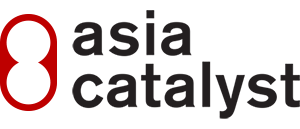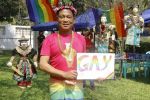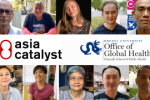By Meg Davis
What’s your vision? Most organizations have a mission statement; the groups we work with in China generally write broad, vague, uninspiring statements in order to meet requirements for registration. These don’t give a sense of their vision to create social change.
By “vision statement”, different groups mean different things. We mean a one-sentence picture of the change your organization will create in the world in 20 or 30 years. This statement goes in the box all the way on the right in the logic model we use in strategic planning. It’s the first piece to create in this approach to strategic planning, and an important way to unify and focus everyone in the organization on a shared goal. Once the vision statement is set, it’s easier to break it down into medium-term goals and immediate actions.
A vision statement has three parts:
1. The group your work hopes to affect. Examples: “women with HIV/AIDS,” “Tibetan snow leopards,” or “NGOs working on homelessness.” By specifying your target group, you are also making it clear that there are certain groups you will not target – because your organization can’t serve everyone.
2. The geographic location where your work is focused. Examples: “Bangkok,” “Yunnan Province,” or “Southeast Asia.” This is important, because it determines the scope of your activities.
3. The major change this group will experience as a result of your organization’s work. Examples: “know and can advocate for their legal rights,” or “significantly increase their English literacy.” It is okay if this goal is a bit abstract, as the strategic plan will require you to break it down into smaller steps later on. It should be ambitious and inspiring, and there should be a clear group consensus around the statement.
We have a fun exercise to get everyone in agreement about the vision statement, adapted from CIVICUS.
If your group is more than four or five people, we recommend that you break the group down into groups of four or five. In a strategic planning meeting where (as we recommend) you may have people of many different statuses and backgrounds working together, we try to create groups of people who will be comfortable speaking to each other, and assign one person who
is good at facilitating discussion to be the group leader.
What you will need:
· Large sheets of paper
· Colored markers – enough to give each small group 4 or 5 colors
· Tape
· Enough wall space to post the pictures when they are done
STEP-BY-STEP
1. Identify the problems – Ask each small group to create a list of three or four key problems they believe the organization is working to address, and write these down.
2. Imagine the future – Ask each group to imagine that they have been out of the country for ten years. They have arrived back to find that their dreams of how the society should be, in terms of the problems they have identified, have been fulfilled. The problems are solved. Give the group a few minutes to discuss what that ideal society will be like.
3. Create a visual aid – Each group should draw a picture of what this ideal future society will look like. Tell them that they can use color, shape, words, and/or images. Everyone should participate in drawing the picture. When the picture is done, each group should also come up with one sentence to describe this ideal future society.
4. Share the visions – Have each group present its picture and explain what it represents to the rest of the participants. The facilitator should capture key words, especially anything that is value-related (e.g. equal access, affordable, quality health care, equitable allocation, democratic, and so on) and write these on a large sheet of paper or dry erase board where the whole group can see them.
5. Create the final statement – The whole group studies the pictures and statements and jointly constructs one vision statement that reflects the range of input.
6. Delegate to a committee – If the large group is finding it difficult to agree on a joint statement, we sometimes create a committee with one representative from each group that works together separately to draft a vision statement while other members work on another task.
The committee can then present the statement to plenary and invite the whole group to edit it. Good examples of vision statements include: “End forced eviction in Phnom Penh,” “All people with HIV/AIDS in China know and can advocate for their legal rights,” or “All courts in Indonesia sentence drug users to rehabilitation, not prison.”
Once you have reached a consensus among the participants in the large group, your organization will have a vision statement to guide its work. You might want to keep the pictures and put them up in your office, if you have space. Even if you and your colleagues, like us, are not great artists, the pictures are entertaining – and also a reminder of the world you’re working to create.




